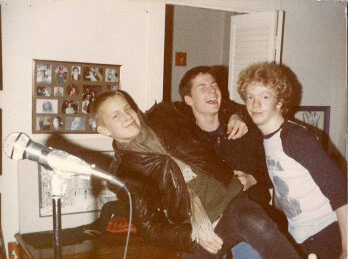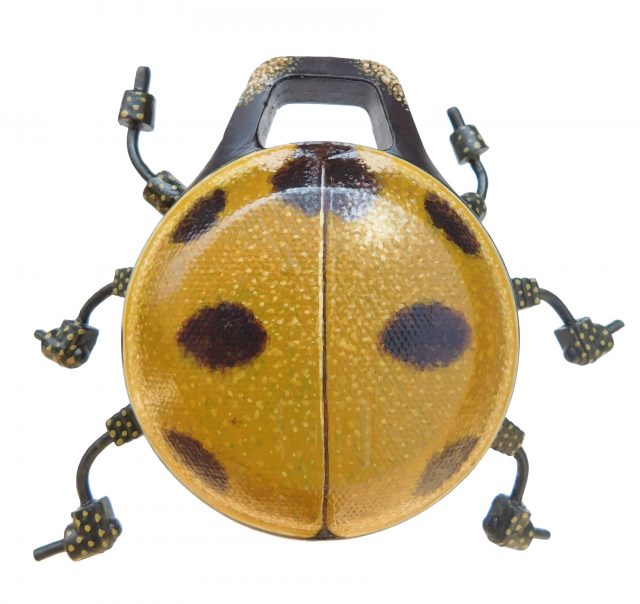On June 25th, PBS published an article with the completed video bio as well as a short interview. Check it out below!
----------------------------------------------------------------------------------------
Paul Paiement sits down to discuss life, philosophy, and work
Q: Do you have a brief artist statement? Paul Paiement: It’s an exciting time to be alive. We are living in a period that is reminiscent of the Romantic era. Our fast-paced, controlled, ordered, synthetic, technologically driven culture has created a deep desire to reconnect with the vast and ever changing. Like Henry David Thoreau in “Walden,” we seek a slower, more deliberate life. Despite seeming separate from nature we are indeed nature. My paintings “hybridize” the inorganic or man-made synthetic elements of culture (ie. architecture via linear perspective) with the organic elements of the natural world.
My paintings attempt to reconcile these differences through the visual languages of linear/atmospheric perspective, representation/abstraction, and the use of layering. I choose to paint landscapes that lack any specific identity or location. I use atmospheric perspective to create a naturalistic scene that is vast and infinite. The airbrushed plexi-glass overlays are flattened architectural drawings. Though flat, they are drawn in perspective and create a geometric abstraction that contrasts with the detailed representation in the landscape. A hybrid is the result of a co-mingling between nature and machine.
Q: How did you decide that art was going to be your professional calling? PP: I decided that I wanted to be a professional artist when I was in high school. I was researching artists from antiquity and it seemed like the careers of most of them were peaking in their 50s, 60s, and 70s. In other words, they had long shelf lives. At the same time, I was playing music in garage bands. For me, playing rock and roll (like being an athlete) is all about youth. So, playing music was a short-term plan, being a visual artist is my life’s work.
📷Q: You graduated from the Minneapolis College of Art and Design in 1992 – can you briefly detail your journey from that point on? PP: I was 25 years old when I graduated from MCAD and I knew that it was the time to make a major life change. A consistent income as an artist/educator is extremely difficult in any location, so being in a major market was a necessity. So, I moved to the Los Angeles and attended graduate school at the University of Southern California (USC). After graduate school, I worked diligently to find a tenure track teaching position. I was very fortunate to be awarded a one at Cypress College in 1996. This afforded me a consistent income while providing plenty of time to create artwork and maintain a studio practice.
Q: In your early teens you started playing in local bands. Can you give us a brief description and memory from these groups? The Blu Hippos, Todlachen, Otto’s Chemical Lounge, The Fun Seekers.
PP: I can’t think of a better way to spend the most informative and developmental years of my life. I learned so much. In fact, I often refer to it as my “real” high school. I discovered my purpose and determined the kind of artist I want to be. When we formed the Blu Hippos, hardcore punk was brand new. Like all great innovations in art movements, hardcore punk was pushing the boundaries of the medium—guitar rock in this case. Our mentors were the Batson brothers and Hüsker Dü. Like all reactionary art movements hardcore punk made it’s statement rather quickly and (in my mind) played itself out in a year or so. But, it was a great starting point and led to innovative and exciting developments in other areas. Overall, I learned to constantly push myself as an artist—in everyway. I’ve continued this approach as a visual artist. At the core of my practice is inquiry.

Q: Have you found a community of artists in California? Is it important to have a community supporting you? PP: Yes, there is a wonderful community of artists here. One of the interesting things about Los Angeles is that the vast majority (it seems) of people have migrated here from other places. There is still a “wild west” spirit here—anything goes. Whatever thoughts or ideas an artist might have, they’re possible to realize here. The marketplace for art—well, that’s a different story…it’s dog eat dog, very, very competitive. The competition brings out the best and the worst in people. My mid-West sense of morals and ethics keep me grounded.
Q: What are your feelings and thoughts about Minnesota, now that you’ve been gone for 28+ years? PP: I absolutely love Minnesota—the people make the place. I’m always amazed by how humane of an environment it is. I visit as often as I can with my family…and they love it. Even though the immigrant population has grown and broadened, the Scandinavian/Protestant spirit seems alive and well. And, aren’t Denmark, Sweden, and Norway among the happiest countries?
Q: Can you tell us how, as a professional artist, you show and sell your work? PP: It’s through an ever growing and expanding network of artists, curators, art writers, critics, gallerists etc…it’s about getting your artwork out and seen by as many people as possible. Sometimes opportunities come my way, sometimes I initiate. That’s one way to build an audience. To refer back to the world of music, both Metallica and the Ramones built their audience by constantly touring and recording. I’ve never taken a break from making artwork and exhibiting.
Q: Can you talk about the intent and process you go through on your Hybrids 2.0 series? (why 2.0?)

PP: The numbering system (1.0-4.5) is a reference to software updates. My “Hybrids” series is in a constant state of evolution. At its core, I’m interested in expressing and questioning what nature is? My inspiration comes from the philosopher Alan Watts. The organic (formed by nature) and the inorganic (man-made) are one—both part of nature, since “we” are nature. By definition, a “hybrid” is the offspring of two different species coming together. So, all of the decisions I make (in my creative practice) reflect (and hopefully communicate) this concept. The insects represent the natural/organic and the techno gizmos represent the man-made/inorganic. The co-mingling represents a hybrid.
Q: You’ve talked about “less is more” with regard to your art. Can you elaborate on what you mean? PP: Again, I attribute this concept to Alan Watts. Every decision I make (in my artwork) communicates something—everything. In this sense, I’m very deliberate in my choices. Nothing is superfluous. The medium, scale, color palette etc…is all by design. I leave nothing to chance. In this sense, Jackson Pollack is my polar opposite.
Q: Does being an art instructor help you as an artist? If so, how? If not, what do you get out of it? PP: Absolutely! I am constantly asked to teach subjects/topics that I’m not an expert in. I’m rarely in my comfort zone. I’m constantly researching, inquiring, observing, learning, and developing. Then, transform those theories into a practice or application. So, I’m constantly learning. I love teaching because I’m really the student.
Q: Do you have any advice for young artists just starting out? PP: Think of everything as an investment. Be patient. Be in it for a lifetime of learning and growth. Let your efforts stem from love and passion—not financial gain. The stock market is a great example of this. Over the course of it’s existence, it has always risen. It’s had periods of recession and even crashes, but its lifespan has always marked growth.
You can read this same article at their website at: https://www.tpt.org/post/artist-paul-paiement-talks-art-tours-minneapolis/?utm_source=facebook&utm_medium=post-mno&utm_campaign=20180626-paul-paiement-teaser

Komentáře